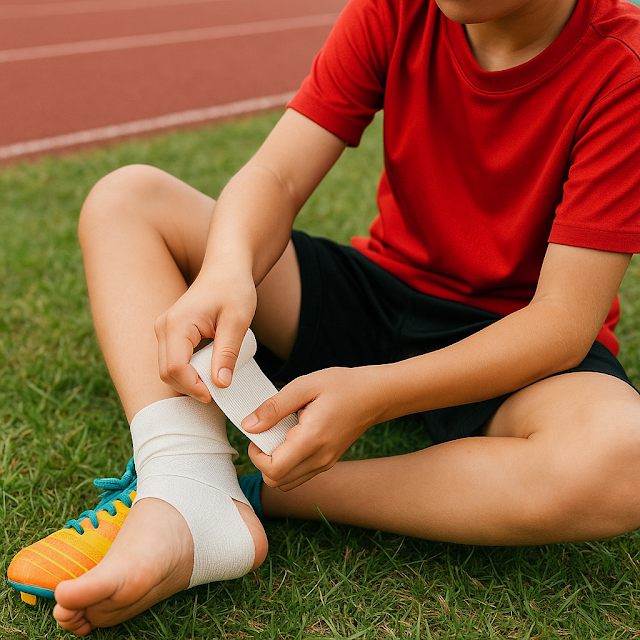Treating Sports Injuries: How the RICE Method Can Help
Whether you're a seasoned athlete or someone who plays sports casually, injuries can happen when you least expect them. Twisted ankles, sprained wrists, or pulled muscles are common sports-related injuries. When they occur, taking immediate action can make a big difference in how quickly and effectively you heal. One of the most trusted and widely recommended methods for early injury treatment is the RICE method—which stands for Rest, Ice, Compression, and Elevation.
This simple, four-step approach helps reduce pain, swelling, and inflammation, and can be used as a first-aid measure before professional medical help is needed. Let’s explore each component of RICE and understand how it aids recovery.
1. Rest
The first step is to stop using the injured area immediately. Continuing activity can make the injury worse, increase swelling, and delay healing. Rest allows your body to begin the repair process. This doesn’t mean you have to stay in bed all day, but you should avoid putting weight or stress on the injured limb for at least 24 to 48 hours.
For example, if you've sprained your ankle, try to avoid walking or standing for long periods. Use crutches if needed to take the weight off the injured foot. Listen to your body—pain is a clear signal to slow down or stop.
2. Ice
Applying ice to the injured area helps reduce swelling and numbs the pain. Ice constricts blood vessels, which slows down circulation and reduces internal bleeding and fluid buildup in the tissue.
Use an ice pack, a bag of frozen vegetables, or a towel filled with ice cubes. Apply it to the injury for 15–20 minutes every 2 to 3 hours for the first 48 hours after the injury. Always wrap the ice in a cloth or towel to avoid damaging the skin.
3. Compression
Compression helps control swelling and provides support to the injured area. It works by preventing excessive fluid from accumulating in the tissue around the injury.
To apply compression, use an elastic bandage like an ACE wrap. Wrap it snugly around the injured area, but not so tightly that it causes numbness, tingling, or increased pain. Loosen the wrap if you notice swelling below the injury site or if the area becomes discolored.
4. Elevation
Elevation involves raising the injured body part above the level of the heart. This encourages fluid to drain away from the injury, reducing swelling and discomfort.
If you’ve injured your leg or ankle, lie down and prop it up on a pillow or folded blanket. If it's a hand or arm injury, use a sling or rest it on a high cushion. Try to keep the area elevated as much as possible, especially during the first 24–48 hours after the injury.
When to See a Doctor
While the RICE method is highly effective for minor injuries like strains, sprains, or light bruises, it’s important to know when to seek medical attention. See a doctor if:
-
The pain is severe or doesn’t improve within a few days
-
You can’t move or put weight on the injured area
-
There is significant swelling, bruising, or deformity
-
You suspect a fracture or torn ligament
Timely medical care ensures proper diagnosis and treatment, preventing long-term damage or delayed healing.
Final Thoughts
The RICE method is a reliable and easy-to-remember first-aid technique for managing common sports injuries. Acting quickly with Rest, Ice, Compression, and Elevation can significantly reduce pain and swelling, and help get you back to your favorite activities faster.
Remember, prevention is always better than cure. Warm up before exercising, wear proper gear, and listen to your body to avoid injuries in the first place. But when injuries do occur, RICE is your best first step toward recovery.






0 Comments